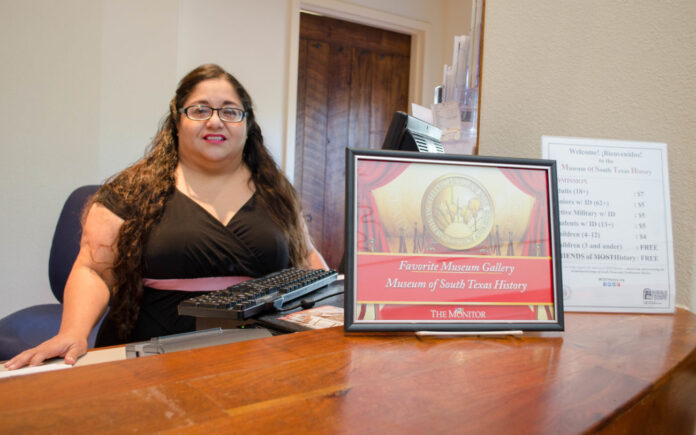
When the Rio Grande Valley’s first case of COVID-19 was confirmed in March, no one could predict the precise impact it would have on people’s lives. Businesses, schools and churches were forced to close their doors to the public; those providing essential services had to rethink their operations to abide by health restrictions; jobs were lost and a people accustomed to companionship and extroversion struggled with isolation.
And then there was the loss of life.
Much like the rest of the nation, Valley families are reeling having lost 3,000 local souls and counting. People who’ve succumbed to this deadly disease have left voids in their families’ lives, and in their communities. Left are their legacies, waiting to be told by their loved ones.
For the Museum of South Texas History, the virus hit too close to home when one of their own, Sandra Luna, fell ill with the virus and died on July 12.
Recognizing the need to document this alarming loss of life, MOSTHistory has launched Bearing Witness, a series of stories about the residents of the Valley who died due to COVID-19.
AIM Media Texas newspapers in the Valley have partnered with the museum and agreed to publish these stories on Mondays.
According to Francisco Guajardo, chief executive officer for MOSTHistory, the joint effort is more than a public service that helps identify those who were lost to the pandemic, but a historical collection which will live within the museum’s Margaret H. McAllen Memorial Archives.
“As a museum we thought that we could do two things: No. 1 — create a collection of the pandemic of 2020, because … we don’t have a collection of the 1918-1919 Spanish influenza to look at for how to deal with that kind of historical circumstance,” Guajardo said Friday. “Let’s begin a collection and grow it to capture this historical moment for our progeny.”
The second motivating factor is the museum’s function to document the community’s history.
“This is our public responsibility,” Guajardo added. “We wanted to help people mourn and heal, and so we thought let’s do this by engaging in a Bearing Witness campaign, in which we talk to people who bore witness to those who we’re losing. It just so happened that the regional newspapers were committed to a similar vision, and so there was an obvious synergistic opportunity. We would do this in a very quiet way, under the radar. So a partnership with the newspapers gives us an opportunity to do this as a public healing with public connections, in which we can all have the opportunity to grieve together, and … preserve and present for the public good.”
Stephan Wingert, regional vice president and publisher of The Monitor, Valley Morning Star and The Brownsville Herald, shared a similar sentiment.
“It’s our moral and professional responsibility to chronicle the lives and deaths of those in our community who have died due to COVID-19,” Wingert said Friday. “We remain committed to helping MOSTHistory tell these stories by publishing them in our newspapers and across our digital platforms for future generations to understand what we faced, and what we lost during the pandemic of 2020.”
Regarding Luna, even grieving her loss was a challenge in the age of COVID-19 as mourners were unable to console each other — a reminder of what families have suffered through during the pandemic as similar stories of heartbreak have been shared from community to community in South Texas.
This lack of connection — to express grief through an embrace, with a hand on a shoulder, a kiss on the forehead, or by taking someone’s hand — is necessary to protect from the spread of the virus. And it’s also a bitter pill to swallow when in need of consolation.
“It hit us in a very personal way. Not only because we were losing someone who was so close to us, she had worked with us for 20 years, but the kind of death that this was, was unprecedented to all of us in a personal way,” Guajardo said. “It’s personal and it’s cultural. The cultural way is we could not mourn together, with her family or even us. I mean we held a meeting to have essentially our own wake, and it was on Zoom. It was very deficient from a human standpoint. We couldn’t touch each other; we couldn’t embrace; we could not feed off of each other’s energy to both mourn and heal from the loss of a very close friend. We wanted to respond to that experience of loss.”
To learn more about the museum’s efforts, visit MOSTHistory.org.




